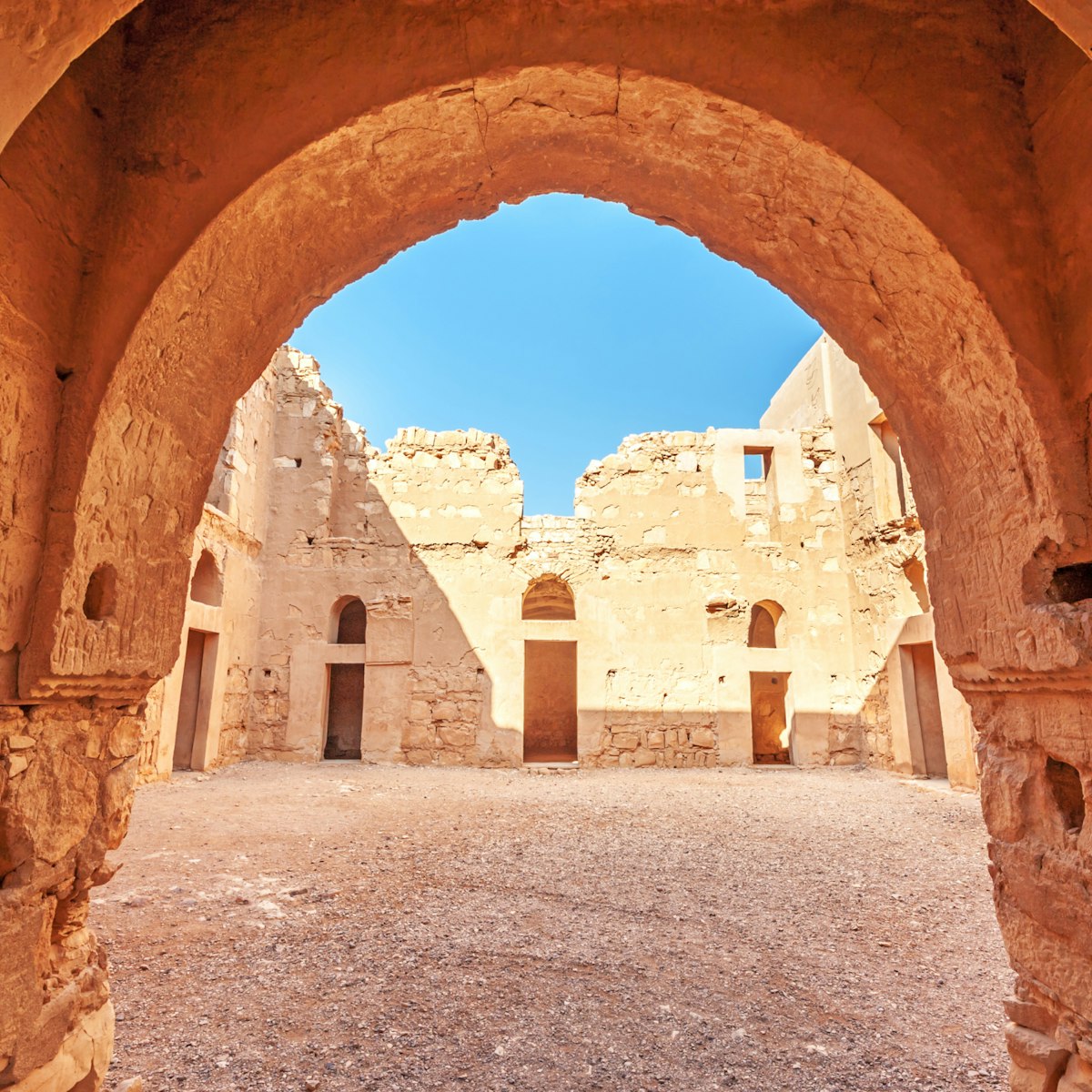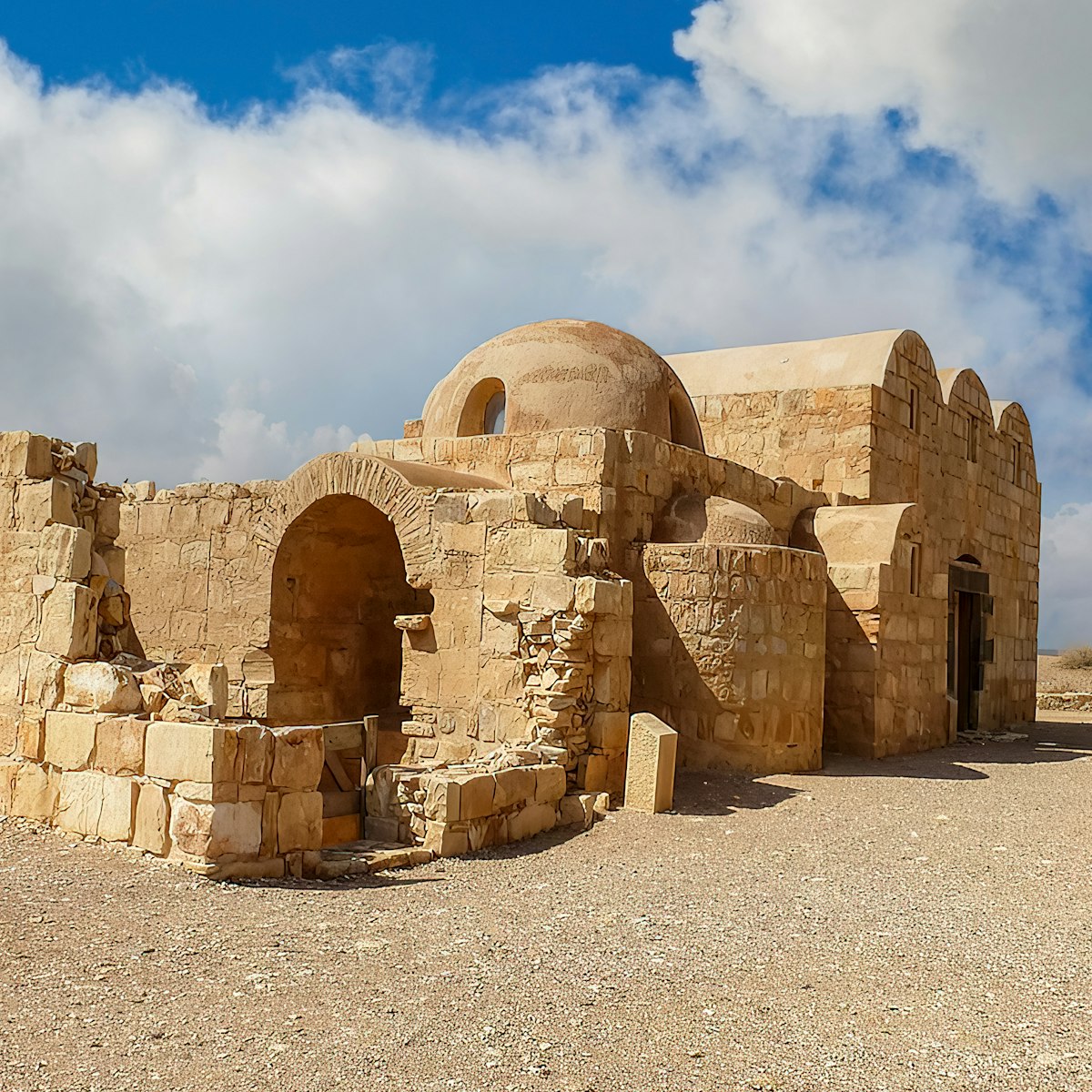On the edge of dusty Azraq, this imposing fort is where TE Lawrence and Sharif Hussein bin Ali based themselves in the winter of 1917–18 during the Arab Revolt against the Turks. Lawrence set up his quarters in the room above the southern entrance, while his loyal followers braved the elements in other areas of the fort. They were holed up here for several months in crowded conditions with little shelter from the intense cold – gaping holes in the roof were patched up with nothing but palm branches and clay.
Despite the hardships endured during his stay at Azraq, TE Lawrence writes fondly about the time spent with his men at arms. In the evenings everyone would assemble before a great fire in the open courtyard and break bread while swapping stories of war, peace and love. At the time, the castle also commanded sweeping views of the nearby palm-fringed oasis at Azraq.
Constructed out of black basalt stone, Qasr Al Azraq was originally three storeys high. Some paving stones in the main entrance have small indentations, carved by former gatekeepers who played a board game using pebbles to pass the time. By the courtyard entrance, look for the carvings of animals and various inscriptions.
Comparatively little is known about the history of Qasr Al Azraq, and there’s been little excavation and renovation. Greek and Latin inscriptions date earlier constructions on the site to around AD 300, coinciding with Roman occupation.
The fort was renovated by the Umayyad caliph Walid II, who used it for hunting and as a military base. Its present form dates to 1237 when it was fortified by the Ayyubids as a defence against the Crusaders. The Turks subsequently stationed a garrison here in the 16th century. In a turn of the tide in 1918, it was from this building that the Arab Revolt launched an attack on Damascus that proved successful in ousting the Turks from the region.
Above the entrance is Lawrence’s Room, strategically overlooking the entry and offset with arrow slits for defence. Opposite the entrance, and just to the left, are the remains of an altar, built in the 3rd century AD by the Romans. In the middle of the courtyard is a small mosque, angled to face Mecca – it dates from the Ayyubid period (early 13th century) but was built on the ruins of a Byzantine church. In the northeast corner of the courtyard, a hole with stairs leads down to a well, full of water until about 20 years ago. In the northwest corner are the ruins of the prison.
The northern sections are residential areas with barely discernible ruins of a kitchen and dining room, and nearby storerooms and stables. The tower in the western wall is the most spectacular, and features a huge door made of a single massive slab of basalt. Lawrence describes in his book Seven Pillars of Wisdom how it ‘went shut with a clang and crash that made tremble the west wall of the castle’.
The fort is situated on the edge of Azraq Ash Shomali (north Azraq), about 5km north of the Azraq T-junction. From the town centre, a taxi to the fort costs around JD2 (JD5 with a one-hour wait) – if you can persuade a taxi to bother with such a small commission.





